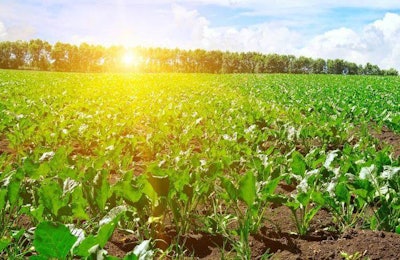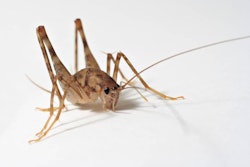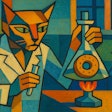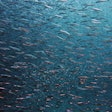
Dr. Joseph Wakshlag, associate professor at Cornell University’s College of Veterinary Medicine, said the pet food industry will need to explore the novel – such as kangaroo – and previously shunned proteins to stay in business far into the future, at an April 19 presentation at Petfood Forum in Kansas City.
The trends, Wakshlag said, are hard to ignore. The world’s population is growing, and the planet’s resources will be challenged to provide both the grains and the livestock needed to keep it fed. Meanwhile, the environmentally conscious millennial demographic is quickly becoming the world’s dominant consumer demographic. To meet consumer demand and the environmental reality, the pet food industry must consider looking for proteins from rendering, vegetables and grains and unconventional animals, he said.
Expanded use of rendered livestock protein
Wakshlag said rearing livestock presents global environmental challenges – large amounts of fresh water, energy and otherwise arable land are needed to produce animal protein from livestock, for example – but expanded use of rendered proteins in pet food can provide a sustainable path forward. By utilizing byproducts of animal processing and rendering carcasses for protein meal, the pet food industry saves the carcasses from being buried, landfilled or otherwise wasted.
Rendering has a bad reputation due to questions about its cleanliness that originated decades ago and marketing efforts of animal byproduct free pet food products. The process has been cleaned up substantially thanks to recent regulations of the rendering industry, he said, and recent research shows rendered products are both free from bacteria and far more digestible than they were in the 1980s.
Over the long term, rendering is more sustainable than grain-free and animal byproduct free pet foods that are gaining favor with consumers.
“That’s what beautiful about the pet food industry is that we can use byproducts … so we can basically not have to worry about using consumables that the humans can eat as part of their daily diet,” Wakshlag said.
“We are seeing this huge march toward natural, we’re seeing a huge march toward higher protein in diets … All these things are actually less sustainable. We’re going to grain-free diets; we’re doing all these things that are actually sort of the antithesis of trying to create sustainability in the industry.”
Vegetable protein
Since less energy and resources are needed to produce enough protein for pets, vegetable sources could be a “panacea” for pet nutrition in the future, Wakshlag said. But issues with consumer acceptance are holding the group back.
“Nobody likes to use it. Corn gluten isn’t used very often anymore due to negative connotations, soy bean is not used,” Wakshlag said. “Really, we should be trying to incorporate more of these vegetable proteins into our foods. If only we could market it to the masses. We just have a harder time doing that because of the marketing that we have ingrained in our entire population.”
Sufficient protein for cats and dogs can be found in numerous vegetable sources such as land cress, purple kale, dandelion, red chard, beet greens, brewer’s yeast and duckweed. He highlighted duckweed, specifically Landoltia punctata, because it is high in protein and abundant, and it is already used in pig and poultry diets.
Fished and hunted animals
Using protein from local, non-livestock animals and fish could also be a long-term solution for the pet food industry. Wakshlag pointed to Australia and the use of kangaroo meat as an example of how a nuisance animal could be used as a source of animal protein in pet food.
In Australia, kangaroo populations are high and national harvesting is authorized by the government. As part of the annual cull, kangaroo meat is collected and exported around Southeast Asia as a protein source. In other countries with an excess of animals that are monitored and socially and culturally acceptable to hunt and eat – white-tailed deer in the United States, for instance – the meat of harvested animals could be expanded in pet food in the future.
The use of farmed and caught fish as well as fishmeal could also be expanded in the pet food industry, Wakshlag said. However, aquaculture is problematic because it has not been proven to be cost effective, and it lags behind wild-caught fish in nutritional value. Caught fish from the world’s oceans is more nutritionally whole, but it comes with a slew of issues such as environmental exploitation, high employment demands and more consumption of resources.

















